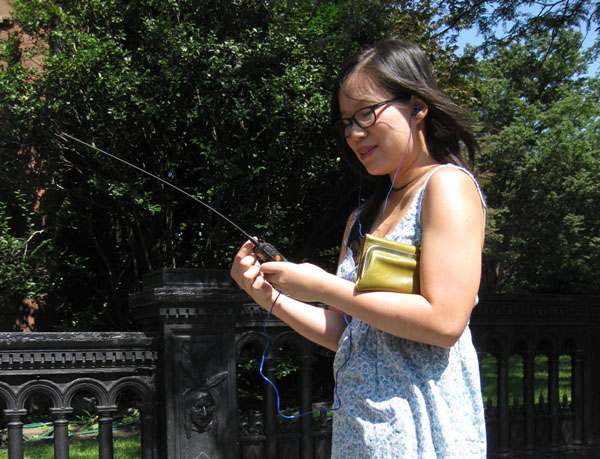
by Laura Hall | Apr 7, 2016 | Uncategorized
You read my last post about why you should become an Amateur Radio Operator (aka: ARO, aka: Ham), right? And you went out and got your license and a handheld radio, right? Great – now it’s time to practice. Portland is full of great opportunities for getting hands-on experience using your radio.
BABY STEPS… PROGRAM AND TALK:
When the Big One hits, you don’t want to be fumbling with your radio and trying to read a list of frequencies. You’ll want to turn your radio on and have immediate access to the frequencies that will be used by other AROs in your area. And you don’t want to be terrified of talking if you have important messages to convey. That means you need to program those frequencies into your radio and practice using the darn thing. It’s especially important to learn when to talk and when not to talk.
It can seem intimidating at first, but once you get past these first few hurdles, you’ll be amazed at how quickly you will become comfortable operating your radio.
PROGRAMMING & OPERATIONS CLASSES:
The Piedmont Neighborhood Emergency Team is hosting two three-hour classes for newly-licensed amateur radio operators and other “hams” who have been out of action for a while or who never quite got activated. I went to one of these trainings recently, and it was fan-tastic. These classes are free, but please pre-register.
- Saturday, May 14, from 1-4pm at the Leaven Community Center, 5431 NE 20th Ave, Portland, 97211. Register here.
- Saturday, June 18, from 9am-12pm at the Leaven Community Center, 5431 NE 20th Ave, Portland, 97211. Register here.
NETS: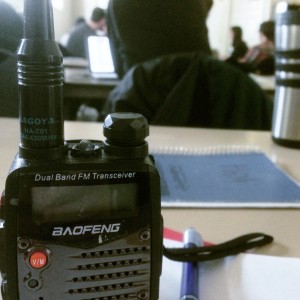
An amateur radio net, or simply ham net, is an “on-the-air” gathering of amateur radio operators. Most nets convene on a regular schedule and specific frequency and are organized for a particular purpose, such as relaying messages, discussing a common topic of interest, communicating in severe weather, coping with emergencies, or simply gathering for conversation. (Wikipedia) — This type of net is not to be confused with Portland NET, the Neighborhood Emergency Team program!
Several Portland area groups do regular ARO Nets each week. Even if you don’t feel ready to talk yet, at least listen in so that you can get comfortable with the way AROs communicate. The following are some Nets you should consider participating in.
NET Net:
The Neighborhood Emergency Team Net (NETnet) is a ham radio on-air gathering that discusses issues of interest to Portland NET members. Their primary audience is those with little or no experience on the air, but they often get check-ins from experienced hams and folks not associated with emergency communication. Anyone can listen, but you do need at least an amateur radio Technician License to transmit.
If you are a NET ARO, prospective NET ARO, or a Ham interested in emergency communication, the NETnet is a wonderful resource. Roughly 40 Hams are checking in to this net each week.
- WHEN: Sundays at 8pm
- VHF: 147.040 aka MC-6 (West Hills) or 147.320 (Saddle Mountain) or 147.380 (Cedar Mills) — use +600 kHz offset, PL tone 100.0
- UHF: 442.225 (West Hills) or 442.325 (Saddle Mountain) — use +5 MHz offset, PL tone 100.0
NETnet organizers are looking for feedback and suggestions on how to make the NETnet an even more effective training venue than it already is. Please click here to complete a short online survey.
PARC Net:
The Portland Amateur Radio Club (PARC) is a great resource for AROs in the Portland area. They have monthly in-person meetings, as well as a weekly on-air net.
- WHEN: Mondays at 7pm PT on 146.84
MC-ARES Net:
The Multnomah County Amateur Radio Emergency Service (MC-ARES) is a field organization of the American Radio Relay League (ARRL). Members are active in community service. They also have monthly in-person meetings, as well as a weekly on-air net.
- WHEN: Wednesdays at 7pm PT on the 146.84 repeater
NTTN Net:
The Northwest Oregon Traffic and Training NET (NTTN) is handles formal written traffic into and out of the state of Oregon.
- WHEN: Daily at 18:05 (6:05 pm) PT on 146.80 Repeater with 07.2 Hz PL tone
MEET YOU ON THE NETS!
Joining in on a Net can be intimidating, but AROs are a welcoming and forgiving group. This is the best way to learn to use your radio so that you’ll be effective in an emergency situation. I hope to meet you on a Net sometime soon!
–Laura Hall, Arbor Lodge / Kenton NET Assistant Team Leader, arborlodgeprepares@gmail.com

by Laura Hall | Mar 22, 2016 | Radio Communication
Here’s the thing about radios: they might save your life. After a major earthquake, modern communication devices will likely fail us. Cell networks will be damaged or jammed, landlines will be down, and your internet won’t be functioning. So how will we communicate with one another? A technology that was first developed over 100 years ago… amateur radio!
WHAT IS AMATEUR RADIO?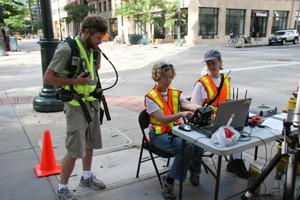
Amateur Radio (ham radio) is a form of two-way radio communication. It is restricted to certain frequencies so that it won’t interfere with government, military, and commercial radio use. Amateur Radio Operators (aka: AROs or Hams) have basic knowledge of radio technology and operating principles and must be licensed by the Federal Communications Commission. The FCC created this designation so there would be a pool of radio experts who could provide backup during emergencies, and Hams have indeed proved themselves useful in this way.
HOW HAMS HELP
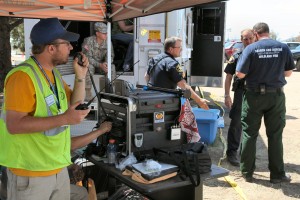 Amateur radio operators often volunteer at community events such as races where important information (like injury alerts or route issues) must be passed quickly to multiple people over long distances and an FRS/GMRS radio (aka: walkie talkie) wouldn’t have enough power to do the job. This is a great way for Ham operators to practice their skills.
Amateur radio operators often volunteer at community events such as races where important information (like injury alerts or route issues) must be passed quickly to multiple people over long distances and an FRS/GMRS radio (aka: walkie talkie) wouldn’t have enough power to do the job. This is a great way for Ham operators to practice their skills.
They can also help out in emergencies such as hurricanes and earthquakes. “For instance, the Amateur Radio Service kept New York City agencies in touch with each other after their command center was destroyed during the 9/11 tragedy. Ham radio also came to the rescue during Hurricane Katrina, where all other communications failed, and the devastating flooding in Colorado in 2013.” (ARRL.org)
AMATEUR RADIO VS. WALKIE TALKIE:
Many people have two-way radios that they’ve purchased for home use. Often called walkie talkies, these are either FRS or FRS/GMRS radios. FRS, or Family Radio Service, radios do not require a license to use. Like amateur radio, GMRS, or General Mobile Radio Service, radios do require a license to use. If you have a walkie talkie radio that includes both FRS and GMRS frequencies, you must be careful not to use the GMRS frequencies unless you have a license.
An FRS/GMRS radio can usually only reach a few miles – or a few city blocks if there are buildings, trees, etc. obstructing the signal. Depending on the strength of the power source and the use of radio relays, amateur radios can communicate across the globe. Clearly the amateur radio is a better option for use in urban areas. And if you aren’t already sold on it, these days an amateur radio often costs less than an FRS/GMRS radio. I got my handheld Baofeng UV-5R on Amazon for $25!
OKAY, SIGN ME UP!
If you’d like to become an amateur radio operator, the first step is to study for the FCC licensing test. There are three levels of licensing: Technician, General, and Extra. Technicians operate on a more limited range of frequencies than those with the General or Extra license, but it’s the most common type and sufficient for most people’s needs.
Some people can pass the test just by studying online materials or books, but the rest of us need to take a class.
Study Materials
Classes in Portland
- The Portland NET program often offers Ham classes. Once you’ve completed the NET Basic Training, you’ll have access to an array of advanced trainings, including amateur radio.
- The Piedmont Neighborhood Emergency Team is offering free Technician classes on April 30 and June 4, 2016. Register at http://pdxpiedmont.net.
Where to Take the Test
- If you take the amateur radio class through the NET program, testing will be done at the end of the class
- The National Association for Amateur Radio (ARRL) publishes a list of testing options by location
STAY TUNED…
My next blog post will be about what to do once you’ve passed the test. There are tons of great resources in Portland for new Hams who want to get practice using their radios.
–Laura Hall, Arbor Lodge / Kenton NET Assistant Team Leader, arborlodgeprepares@gmail.com
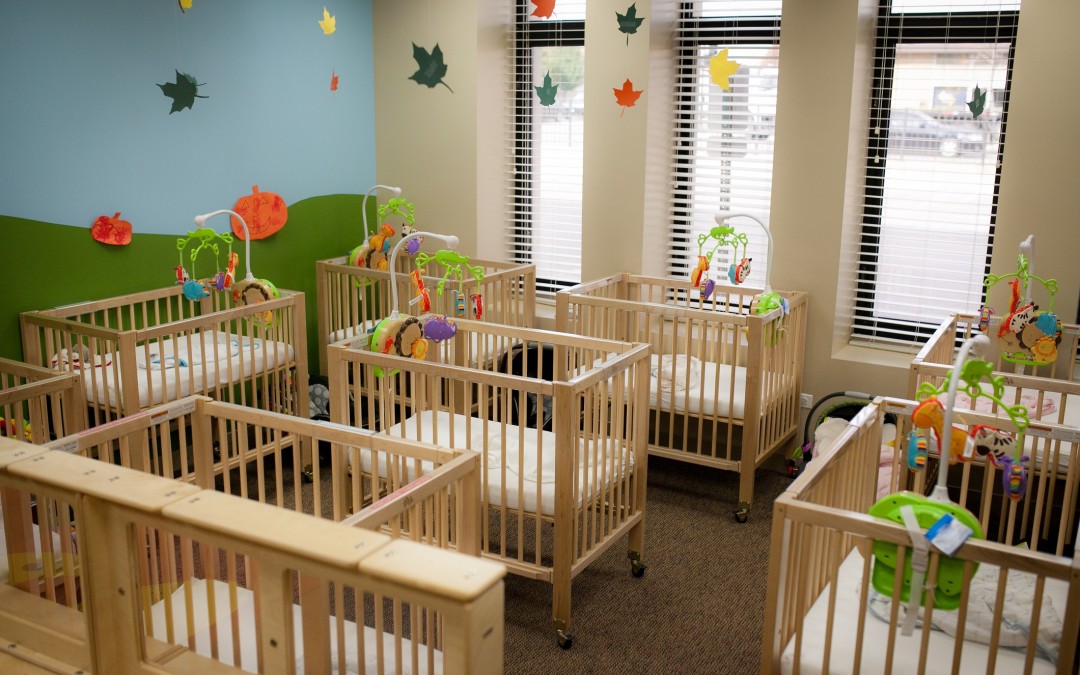
by Laura Hall | Feb 27, 2016 | Uncategorized
I became interested in emergency preparedness when I was pregnant with my first child. I could handle my own mortality, but my child’s? No way. These days I think about all children, not just my own. Lately I’ve been asking childcare providers in my community what they’re doing to prepare for an earthquake. Read on to see what a few of them have told me. If you have concerns about your child’s facility not being prepared, consider sharing this info with them.
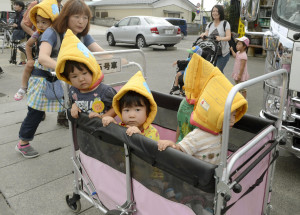 PHYSICAL PREPARATION
PHYSICAL PREPARATION
- Consider having your facility retrofitted, and make sure water heaters are strapped to the wall.
- Secure top-heavy furniture with brackets or straps, cabinet doors with latches, and smaller items that could fall with museum putty.
- Make sure all staff know how to shut off electricity, gas, and water. Make sure staff are aware if there is an asbestos situations that would necessitate evacuation.
- Have all of the same preparedness supplies as a regular home, plus food/water reserves to last several days or weeks for all children and staff. Visit the Portland Bureau of Emergency Management’s Preparedness Resources page for detailed information about how to make plans and build kits.
- Have provisions for sheltering in place outside the facility (back yard), in a hazard-free area nearby (park, etc.), and a location further afield (if a toxic situation arises near the facility).
- Have parents prepare a “comfort kit” for their child, and add a space blanket, poncho, and dust mask to each one.
COMMUNICATION
- Conduct drills frequently. Make sure everyone knows the drill: drop, cover, hold. Identify a safe gathering space outside for after the shaking stops.
- Communicate with families several times a year about this issue. Make it clear to them that you will do your best to care for children until they can arrive, but they should have backup plans in place for someone else to pick up their children in case they are unable to get to the facility.
- Have hard copies of all parent information, including work address and emergency medical forms, ready to go with you once the shaking has stopped. Have an out-of-state (non-West coast) contact number for you and families to use as a point of contact for updates, as local numbers will not go through.
- Encourage families to discuss earthquake safety at home and prepare their own kits.
- Be prepared to deal with the children’s emotions after an earthquake. They will be scared and need lots of reassuring. Use physical reassurance (hugs), and make sure they understand that you will take care of them until their parents arrive.
- Keep in touch with your local Neighborhood Emergency Team so that you know what they’re planning, and consider Other Ways to Prepare.
TRAINING
- Consider getting NET training for you and your staff. NET volunteers know how to do light search and rescue, basic disaster medicine and triage, radio communications, fire suppression, disaster psychology, and trauma intervention.
For a more in-depth look at childcare facility preparedness, read Multnomah County’s Child Care Center Crisis / Disaster Response Handbook. This is an excellent tool that covers most of what a facility would need to be prepared.
–Laura Hall, Arbor Lodge / Kenton NET Assistant Team Leader, arborlodgeprepares@gmail.com
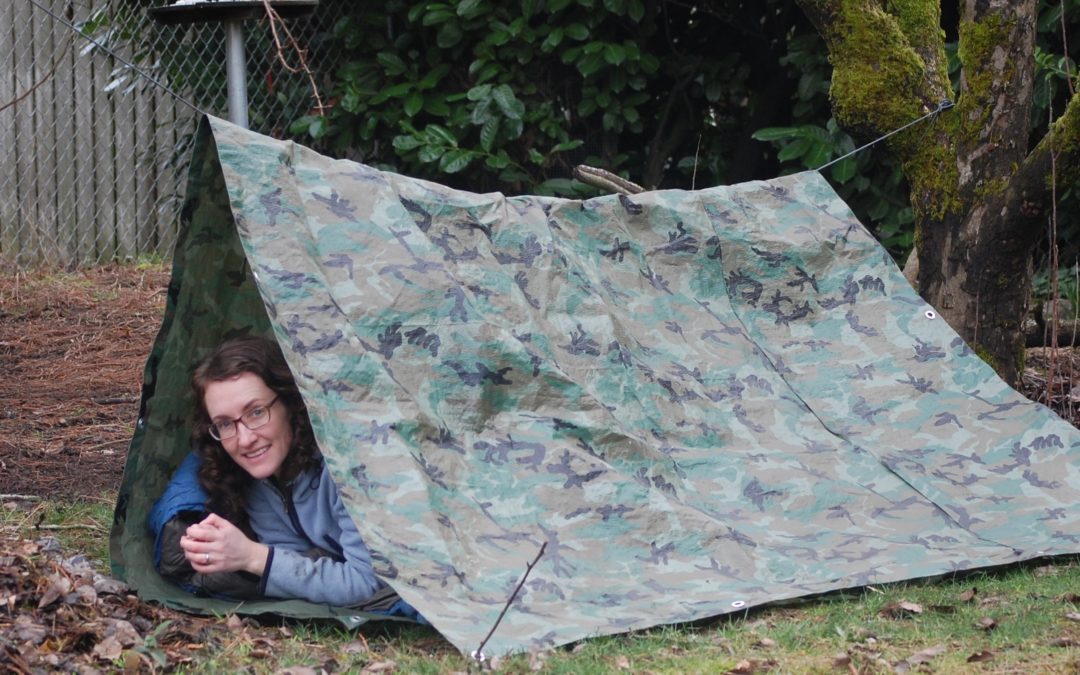
by Laura Hall | Feb 19, 2016 | Training
One of the advanced trainings that the Portland Bureau of Emergency Management (PBEM) and Portland Fire & Rescue offer for NET members is knot tying.
How are knots useful?
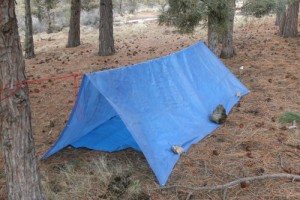 Uh, how aren’t they useful? After an earthquake, you may need to attach a tarp to a tree to create a makeshift shelter, tie down a load of gear to a truck or cargo bike, carry water a long distance, make a clothesline for drying things, etc. Knowing just a few basic knots will prepare you for this, and it can be useful in everyday life as well!
Uh, how aren’t they useful? After an earthquake, you may need to attach a tarp to a tree to create a makeshift shelter, tie down a load of gear to a truck or cargo bike, carry water a long distance, make a clothesline for drying things, etc. Knowing just a few basic knots will prepare you for this, and it can be useful in everyday life as well!
PBEM’s Knots Guidebook:
Check out the Portland NET Knots Guidebook to learn eight highly useful knots. The guide includes knot tying terminology, information about rope safety, advice about what type of gear to buy, and instructions for the following knots: bowline, clove hitch, figure eight, munter, overhand, prusik, square knot, and water knot.
Trucker’s Hitch:
A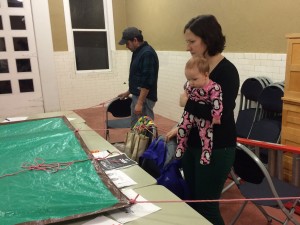 t our NET meeting last week, we practiced another highly useful knot: the trucker’s hitch. It’s a compound knot commonly used for securing loads on trucks or trailers, but it’s also great for making a tarp shelter. It gives you a 2-1 mechanical advantage when tightening the rope. Be careful though. You can actually damage the object you’re tying down because of this! This knot holds fast and is easy to untie – traits of any good knot.
t our NET meeting last week, we practiced another highly useful knot: the trucker’s hitch. It’s a compound knot commonly used for securing loads on trucks or trailers, but it’s also great for making a tarp shelter. It gives you a 2-1 mechanical advantage when tightening the rope. Be careful though. You can actually damage the object you’re tying down because of this! This knot holds fast and is easy to untie – traits of any good knot.
Great Knot Tying Resources:
There are hundreds of knots you could learn, but knowing just a few is enough for most people. It’s more important to be able to tie a few standard knots automatically while under duress than to learn many knots and not know them well.
Now go get a rope and start practicing!
–Laura Hall, Arbor Lodge / Kenton NET Assistant Team Leader, arborlodgeprepares@gmail.com

by Laura Hall | Feb 14, 2016 | Disaster Psychology
It’s happening – the earth is shaking. Furniture is dancing across the room, you’re under a table and hanging on (right?), and all you can hear is rumbling. You’re probably not feeling particularly calm. In fact, your heart feels like it’s racing a mile a minute. First responders call this the adrenaline dump. Here’s what can happen to your body when your heart increases.
Effects of Hormonal Induced Heart Rate Increase
- 60-80 BPM: Normal resting heart rate, normal body function.
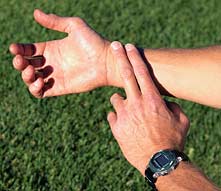
- 115 BPM: Fine motor skills begin to deteriorate.
- 115 to 145 BPM: Optimal survival and combat performance level for complex motor skills, visual reaction time, and cognitive reaction time.
- ABOVE 145 BPM: Complex motor skills begin to deteriorate.
- 175 BPM: Cognitive processing deteriorates; vasoconstriction (reduced bleeding from wounds); loss of peripheral vision (tunnel vision); loss of depth perception; loss of near vision; auditory exclusion (tunnel hearing).
- ABOVE 175 BPM: Irrational fighting or fleeing; freezing; submissive behavior; voiding of bladder and bowels; gross motor skills (running, charging, etc.) at highest performance level.
This data is for hormonal induced heart rate increases resulting from sympathetic nervous system arousal. Exercise induced increases will not have the same effect. – 1997 Siddle and Grossman
Tactical Breathing to Slow Heart Rate
Tactical or “combat” breathing is a technique used by military, police, and other first responders to slow heart rate and regain normal biochemical functioning.
HERE’S HOW TO DO IT:
- Breathe in through your nose to the count of 4.
- Hold your breath to the count of 4.
- Breathe out through your lips to the count of 4.
- Hold your breath to the count of 4.
- Repeat until you feel your body and mind relax.
Vary the number of counts to match your body’s ability and comfort level.
USE IT IN EVERYDAY LIFE:
This technique can be useful without practice, but you’re much more likely to use it in a stressful situation if you practice it regularly. Do it before a job interview. Do it during rush hour traffic. Do it after a stressful encounter to help you calm down. The more you do it, the more likely you are to remember it when you need it most.
–Laura Hall, Arbor Lodge / Kenton NET Assistant Team Leader, arborlodgeprepares@gmail.com













